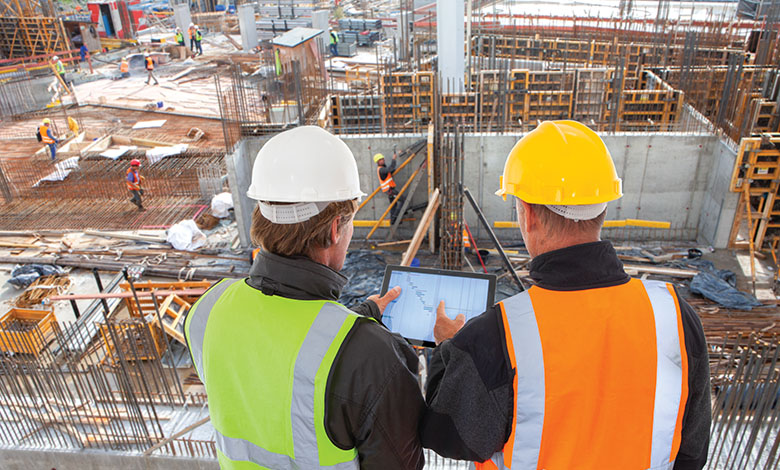
Strategic opportunity for reform of public construction contracts
16th February 2024
SSE AES: Making Irish homes cosier and more energy efficient
16th February 2024Winning the hearts and minds of residents

Winning the support of residents in retrofitting transitions means that landlords and property developers must understand that a zero carbon house is not necessarily a zero carbon home, writes Emma Gilbank, vice chair of the Chartered Institute of Housing Futures (CIH Futures).
Picture this: holding a hot cup of tea, you settle into your sofa, surrounded by the familiar walls of your home; a safe place despite life’s challenges. Now, imagine your landlord proposes changes to those walls, they are using terminology and technology that you are not familiar with and disrupting your life, all in the name of a greener future. Convincing residents about the benefits of retrofit and educating them on the urgency of climate change poses a challenge for housing professionals. However, there are strategies that increase the chance of success.
Let us rewind; in the above scenario, housing professionals had been planning, assessing, modelling, surveying, and securing funding for retrofit work long before the resident became aware of it. Unsurprisingly, they feel a lack of control and barriers emerge. Research indicates that the ease of a task strongly motivates people, with disruption to their lives being a major obstacle.
The ‘fabric-first’ approach is commonly discussed, usually focusing on the energy efficiency measures needed before a heat pump can be installed. Many factors will be assessed: the financials, the carbon savings, smart monitoring and technology, renewables, DMC, fire safety. What is often overlooked is that placing someone in a zero-carbon ready house does not guarantee a low-carbon lifestyle. Behaviour change is crucial for actual carbon footprint reduction and increased comfort.
“Residents must be able to influence the process and be empowered to adopt the necessary behaviour changes.”
Embracing a collaborative ‘resident-first’ approach, which involves residents in the retrofit journey, can yield co-benefits such as enhanced comfort, better health, increased resilience, and a reduced environmental impact. Residents must be able to influence the process and be empowered to adopt the necessary behaviour changes.
To effectively engage residents and drive behaviour change, three key methods of framing communications have proven successful:
- Language: Simplify the message by eliminating jargon and explaining concepts in an easy-to-understand manner. This is harder than it sounds, retrofit itself is a word few understand.
- Message: Make it relevant and keep it local. Do not refer to global issues or impacts. Instead, discuss the impact on loved ones and their own community emphasising the multiple benefits including reduced bills, improved comfort, and better health (all of which rely on behaviour change after retrofit).
- Messenger: People are more likely to trust those they know: their opinion will be influenced by friends and family, their community and even what they think of the housing professional they are speaking to. We upskilled a technician as a TLO (technical liaison officer) because they knew our customers better than anyone else. If you can get someone in the community on board, even better.
An argument I hear regularly from professionals is that people do not need to care about climate change, they just need to see it in the same way as home improvement works like a new kitchen or bathroom replacement. They tell me about their (often older) friend or relative who would never care about the impacts of climate change and so it is not even worth trying. Instead, we should just talk of increased comfort and reduced bills. I do not deny that these messages are an important part of the puzzle but there are three main problems with this argument.
Firstly, the complexity of retrofitting means that decisions vary widely from property to property and a one-size-fits-all would not achieve the desired outcomes for resident or planet. The resident may not see an improvement to the physical appearance of the property which sells most other planned improvement works.
Secondly, those benefits rely on influencing behaviour change similarly to reducing carbon footprint: lower bills and increased comfort are not always direct result of retrofit.
Thirdly, we simply do not have the luxury of leaving climate out of the conversation anymore. We will pass 1.5°C of warming in 2024, the limit, which was agreed as irreversible, harmful level beyond which tipping points would be triggered and suffering would worsen. This language and global scale might not mean much to you, but if I frame it differently it might make it clearer.
Have the young people in your life seen many snow days? Do you remember playing in the snow more regularly when you were younger? Have you noticed winters are warmer and wetter? Was your community impacted by the recent storms, and did you feel unsafe? Do you think about the cost before you put the heating on?
I have experienced all of these changes in my lifetime. Almost all our residents will either live to experience catastrophic climate change or their loved ones alive today will – this is no longer about future generations.
Using the three tips above to try and frame conversations will mean that not only will we have residents who are more comfortable and healthier, but also who are more resilient and hopefully a society that has a safe and habitable future.
Emma Gilbank is the vice chair of the Chartered Institute of Housing Futures (CIH Futures) which represents young housing professionals across the UK and Ireland. She joined the sector in 2020 after graduating from the University of Leeds, and has been shortlisted for a Women in Housing Award.






